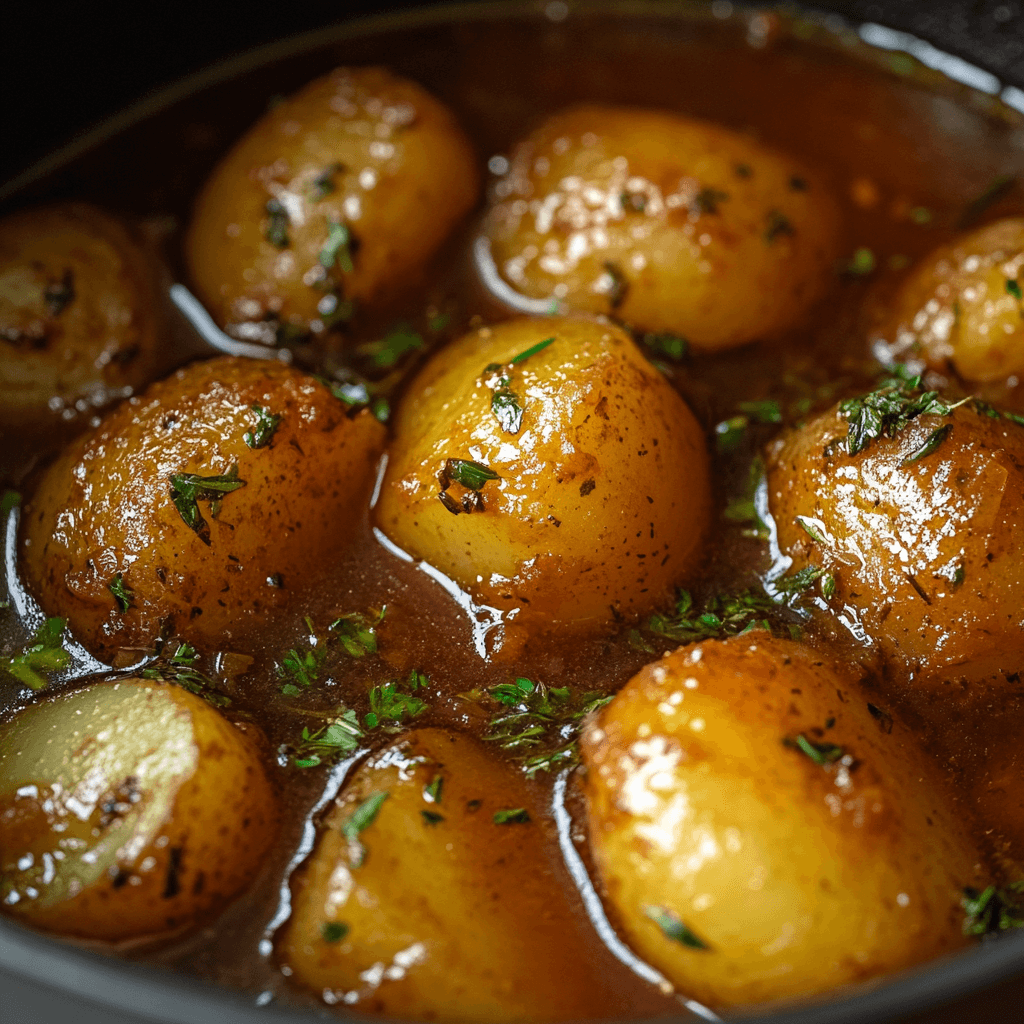Ingredients
Method
- Sauté Aromatics:In a large pot, heat the olive oil over medium heat. Add the chopped onion and minced garlic. Sauté for about 5 minutes, until the onions are translucent and fragrant.
- Combine Vegetables:Add the sliced carrots and cook for an additional 3 minutes, allowing the vegetables to soften and release their flavors.
- Incorporate Broth and Potatoes:Pour in the chicken or vegetable broth, followed by the cubed potatoes, thyme, and paprika. Stir everything well and season with salt and pepper to taste.
- Bring to a Simmer:Increase the heat to bring the mixture to a boil. Then, reduce the heat to low and cover the pot. Let it simmer for 20-25 minutes, or until the potatoes are tender and easily pierced with a fork.
- Adjust Seasoning:Stir the stew and taste it again. Adjust the seasoning as needed. For a thicker consistency, add a slurry of flour mixed with a little cold water in the last few minutes of cooking.
- Final Touches:Garnish with fresh herbs like parsley or a squeeze of lemon juice right before serving.
Notes
-
Potato Variety:
While Yukon Gold and Red potatoes are ideal for stewing, you can experiment with other waxy potatoes, like Fingerling or new potatoes, which hold their shape and provide a creamy texture. Avoid starchy potatoes like Russets as they tend to break down too much during cooking. -
Broth Choice:
Low-sodium chicken or vegetable broth is recommended to control the amount of sodium in the dish. You can make your own broth or use store-bought. If using store-bought, always check for sodium levels and adjust seasoning accordingly. -
Adjusting Consistency:
If you prefer a thicker stew, you can mash a portion of the potatoes with a fork after cooking, or use a slurry of flour mixed with a little cold water and added towards the end of cooking to thicken the broth. You can also add a touch of heavy cream or milk if you desire a richer consistency, though it will increase the calorie content. -
Seasoning Adjustments:
Always taste your stew before serving and adjust the seasoning. Add more salt or pepper as needed. Fresh herbs like parsley, thyme, or rosemary can be used for a vibrant finish. A squeeze of lemon juice or a dash of vinegar can also brighten the dish and balance the richness. -
Serving Suggestions:
Serve your stewed potatoes in individual bowls for a rustic, comforting presentation. Pair them with crusty bread to soak up the delicious broth, or serve alongside a crisp, light salad (like arugula or mixed greens) to balance the richness of the potatoes. -
Vegetable Variations:
Stewed potatoes are a great base for adding other vegetables. Consider adding peas, bell peppers, green beans, or butternut squash for more flavor and color. These vegetables can be added in the last 10-15 minutes of cooking, depending on their cooking time. -
Health Considerations:
Stewed potatoes are a nutritious dish, especially when made with minimal added fats and plenty of vegetables. They are high in vitamins and minerals, including Vitamin C, B6, and potassium, which are beneficial for heart health and overall wellness. For a lower-fat version, use olive oil or other healthy fats, and opt for a lower-calorie broth. -
Make Ahead and Leftovers:
Stewed potatoes can be made ahead of time and stored in the fridge for up to 3-4 days. They actually improve in flavor after sitting for a day or two! You can also freeze leftovers for up to 1-2 months, though the texture of the potatoes may change slightly upon reheating. Reheat on the stovetop over low heat, adding extra broth or water if necessary to restore the consistency. -
Dietary Modifications:
- Vegetarian/Vegan: Use vegetable broth and omit any meat-based broths or additions like shredded chicken.
- Gluten-Free: Ensure you are using a gluten-free broth, and if adding flour to thicken, use a gluten-free flour like cornstarch or rice flour.
- Low Sodium: Use homemade broth or low-sodium store-bought broth and adjust salt to your taste to keep the dish lower in sodium.
